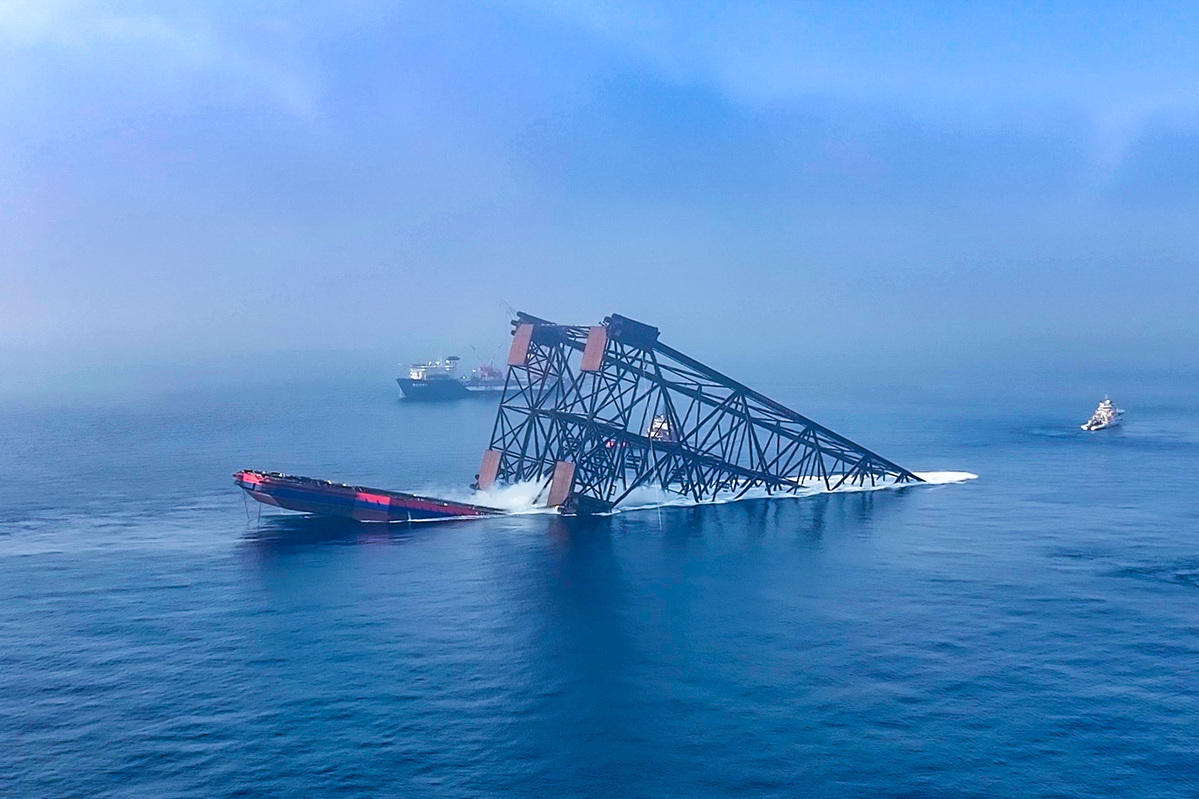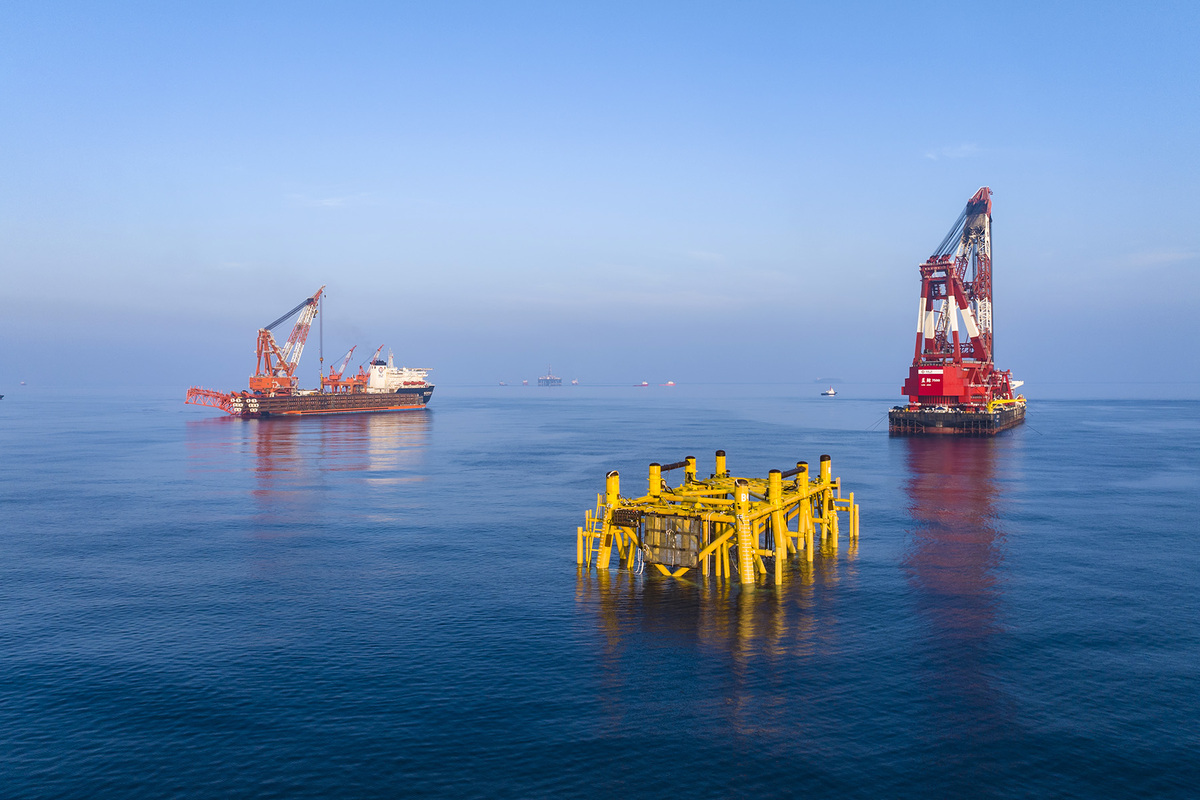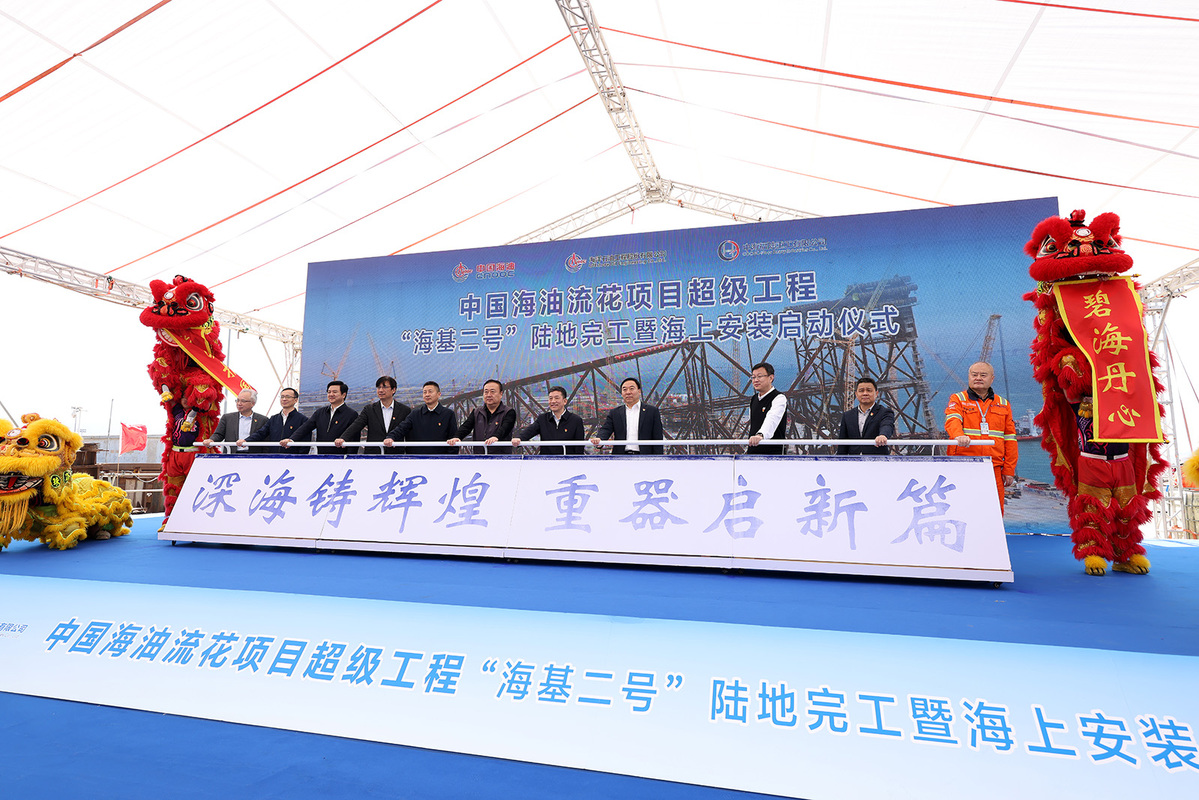Asia's top deep-water jacket a milestone in city's oil, gas equipment production


The completion of Haiji-2 — Asia's tallest deep-water jacket designed and built with Chinese expertise — marks a significant stride forward in Zhuhai's design and construction capabilities for deep-sea, large-scale offshore oil-and-gas equipment.
The jacket platform's offshore installation was started on March 24, and is expected to be completed within the month. Used to support the body and tonnage of an offshore oil-and-gas platform, Haiji-2 is the first digitalized deep-water jacket that integrates multiple intelligent systems in Asia for detecting and monitoring the marine and seabed environment, as well as protecting itself from corrosion. This would enhance the jacket's operational stability and risk-detection capabilities.
Haiji-2, built and completed at a manufacturing base for deep-water equipment in Zhuhai on March 12, has a height of 338.5 meters — as tall as the landmark Macao Tower. Weighing 37,000 metric tons, equivalent to the weight of four Eiffel Towers, the jacket broke two Asian records for height and weight previously held by Haiji One — another deep-water jacket that was built at the same site in February 2022.
"As China's first deep-water jacket that can be used at depths of below 300 meters, Haiji-2 unlocks the potential for developing a large number of deep-sea marginal oilfields — those that have yet to be exploited due to their limited reserves and complex geological conditions," says Wang Huoping, a chief engineer at the Shenzhen branch of China National Offshore Oil Corp, the country's top offshore oil-and-gas producer.

The jacket's enormous size created problems at the construction site, and with the loading capacities of transport vessels, and raised concerns about potential ground settlement. To optimize weight reduction, "the project team collaborated with steel companies in Zhuhai and developed a new type of thick steel plate with MPa-grade ultra-high strength tailored to marine engineering," says Fu Dianfu, a deputy director at CNOOC's research institute.
"The construction of Haiji-2, utilizing more than 20,000 tons of high-strength steel, marks the first large-scale use of such material in China. This helped Haiji-2 to achieve a weight reduction of 5,000 tons, saving costs of more than 100 million yuan ($13.84 million)."
The project also posed challenges for the welding team. Due to the intense hardness of the type of steel used, it required preheating to 150 degrees Celsius, with welding temperatures exceeding 170 degrees Celsius. Welders had to rotate shifts every 20 minutes due to the scorching environment, which reached 60 to 70 degrees Celsius. But, despite the obstacles, the team managed to complete the welding of nearly 120,000 meters of the high-strength steel.

Nestled in the Pearl River Mouth Basin in the South China Sea, the Liuhua oilfield, where Haiji-2 is located, is China's first self-operated oilfield cluster. Extracting more than 14,000 tons of crude oil daily, it's the largest reef limestone oilfield in geological reserves ever discovered in Chinese waters.
The record-breaking deep-water jacket — one of the achievements Zhuhai has made in recent years in ocean engineering — has demonstrated the city's dedication to advancing marine equipment manufacturing.
In January last year, Zhuhai delivered the world's first intelligent unmanned mother ship for scientific research. The vessel can conduct a wide range of research tasks, including sampling, oceanographic observations and marine surveys.
China's first deep-sea floating wind power platform built in Zhuhai entered service in May last year. With an annual production capacity of 22 million kilowatt-hours, the platform can reduce emissions by 22,000 tons, supplying all the power generated for deep-water oilfields.
























